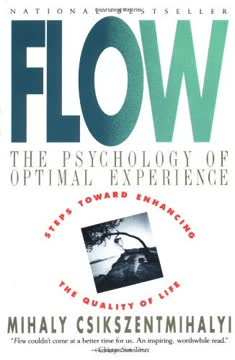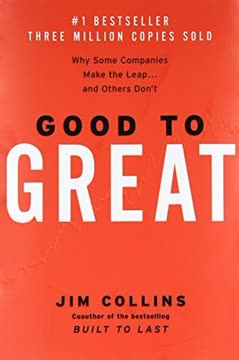Key Takeaways
1. Strategy is survival in a world of killer competition
Using good strategy is how you survive in a world of killer competition.
Explosion of choice. The modern marketplace is characterized by an overwhelming array of options in every category. From 140 vehicle models in the early 1970s to 260 today, consumers face a tyranny of choice. This proliferation extends across industries, from food products to electronics.
Survival of the fittest. In this competitive landscape, companies must adapt or perish. The brand graveyard is littered with once-prominent names like American Motors, Eastern Airlines, and Woolworth's. To survive, businesses need a clear strategy that sets them apart from the competition.
Strategic positioning. Effective strategy involves finding a unique position in the marketplace. It's about answering the crucial question: Why should a customer choose your product over the myriad alternatives? Companies that fail to differentiate themselves risk becoming irrelevant in the face of relentless competition.
2. Perception is reality in the mind of the customer
Minds are insecure for many reasons.
Limited mental capacity. The human mind is a limited container, capable of dealing with only a handful of brands in any given category. This limitation forces people to rank products and brands, creating mental "ladders" for each product category.
Emotional decision-making. Despite what we'd like to believe, most purchasing decisions are driven by emotion rather than logic. Consumers often can't articulate why they buy what they buy, and their stated intentions frequently differ from their actual behavior.
Resistance to change. Once a perception is formed in a customer's mind, it's incredibly difficult to change. This is why it's crucial to establish the right perception from the outset. Attempts to change deeply held beliefs often result in wasted marketing efforts and resources.
Key factors influencing perception:
- Social proof (following the herd)
- Perceived risk (monetary, functional, physical, social, psychological)
- Familiarity and comfort with known brands
- Emotional connections and associations
3. Differentiation is key to standing out in a crowded market
If you don't have a point of difference, you'd better have a low price.
Beyond quality and customer satisfaction. While important, quality and customer satisfaction are no longer sufficient differentiators. They're expected baseline attributes in today's competitive landscape.
Effective differentiation strategies:
- Being first in a category
- Owning an attribute in the customer's mind
- Claiming leadership in a specific area
- Leveraging heritage and tradition
- Highlighting unique production methods
- Capitalizing on "hotness" or momentum
Communicate your difference. Once you've identified your unique selling proposition, it's crucial to effectively communicate it through all channels:
- Advertising
- Brochures
- Web presence
- Sales presentations
Remember, a great product alone isn't enough. You need to create and reinforce the right perceptions in your customers' minds.
4. Competition drives strategy, not customer satisfaction
Know your competition. Avoid their strength. Exploit their weakness.
Shift in focus. Traditional marketing emphasizes customer satisfaction. However, in today's hyper-competitive environment, understanding and outmaneuvering your competitors is equally, if not more, important.
Types of competitive warfare:
- Defensive: For market leaders, focusing on protecting their position
- Offensive: For number two or three players, attacking the leader's weaknesses
- Flanking: For smaller players, finding uncontested market space
- Guerrilla: For niche players, focusing on small, defendable markets
Bottom-up approach. Effective strategy often emerges from the ground up, starting with a deep understanding of tactical realities. Look for a "competitive mental angle" – a unique aspect that can be leveraged into a coherent marketing direction.
Key competitive principles:
- Avoid the strength of the market leader
- Focus efforts on exploiting competitors' weaknesses
- Be prepared to quickly adapt to changing market conditions
5. Specialization beats generalization in business
It's better to be exceptional at one thing than good at many things.
Power of focus. Customers perceive specialists as experts, often giving them more credit for knowledge and experience than they sometimes deserve. This perception can be a powerful differentiator in crowded markets.
Dangers of diversification. Many companies fall into the trap of expanding beyond their core competencies. This can lead to a loss of focus and erosion of brand identity. Examples like Volkswagen moving away from small cars or Scott diluting its tissue brand illustrate the risks.
Benefits of specialization:
- Ability to focus on one product, benefit, or message
- Perception as an expert or "best in class"
- Potential to become the generic name for a category (e.g., Xerox for copying)
Successful specialists:
- Southwest Airlines (short-haul air travel)
- Domino's Pizza (home delivery)
- Intel (microprocessors)
- Gatorade (sports drinks)
Remember: A successful specialist must resist the temptation to diversify and instead double down on their core strength.
6. Simplicity trumps complexity in effective strategy
Big strategic ideas almost always come in small words.
Power of the obvious. Often, the most effective strategies are simple and obvious. However, many people distrust simplicity, assuming that complex problems require complex solutions. This is usually a mistake.
Dangers of complexity:
- Confusion in communication
- Difficulty in implementation
- Loss of focus on core objectives
Strategies for simplicity:
- Use plain language, avoiding jargon and buzzwords
- Focus on one key message or attribute
- Simplify research data to extract actionable insights
- Be wary of over-reliance on focus groups and test markets
- Strive to "own" a simple word or concept in the customer's mind
Examples of powerful simplicity:
- Volvo: Safety
- Domino's: Home delivery
- Crest: Cavity prevention
Remember: If you can't explain your strategy simply, it's probably not a good strategy.
7. Leadership is crucial for implementing successful strategies
No one will follow if you don't know where you're going.
Vision and direction. Effective leaders provide a clear sense of direction and vision for their organizations. They must be able to articulate where the company is headed and why.
Qualities of strategic leaders:
- Flexibility to adjust to changing situations
- Mental courage to make tough decisions
- Boldness in execution
- Deep knowledge of the facts and market realities
- Ability to capitalize on luck and cut losses when necessary
Staying connected. As companies grow, leaders often become disconnected from the front lines. It's crucial for CEOs to maintain a direct connection with the marketplace and avoid relying solely on filtered information from subordinates.
Key leadership principles:
- Lead by example
- Communicate the strategy clearly and consistently
- Focus on long-term success rather than short-term gains
- Be willing to make tough decisions that align with the overall strategy
8. Reality check: Growth isn't always the answer
Goals are like dreams. Wake up and face reality.
The growth trap. Many companies fall into the trap of pursuing growth at all costs, often driven by pressure from Wall Street and unrealistic expectations. This can lead to damaging decisions that harm long-term brand value.
Dangers of unchecked growth:
- Loss of focus on core competencies
- Difficulty in managing larger, more complex organizations
- Increased vulnerability to nimble competitors
- Pressure to engage in creative accounting or short-term thinking
Realistic approach to growth:
- Focus on doing things right; growth should be a by-product, not the goal
- Set realistic targets based on market realities, not wishful thinking
- Be willing to sacrifice short-term gains for long-term sustainability
- Consider the benefits of remaining focused and specialized
Remember: Sometimes, the best strategy is to resist the urge to grow and instead focus on excellence within your current market position.
Last updated:
Review Summary
Jack Trout on Strategy receives generally positive reviews, with readers praising its concise, straightforward approach to business strategy. Many find it a useful guide for developing or adjusting marketing strategies, appreciating Trout's systematic, example-rich style. Some readers note that the book is a compilation of Trout's previous works, which may be repetitive for those familiar with his other books. Despite this, it's recommended for both newcomers to business and experienced marketers seeking a refresher on strategic thinking.
Similar Books









Download PDF
Download EPUB
.epub digital book format is ideal for reading ebooks on phones, tablets, and e-readers.






